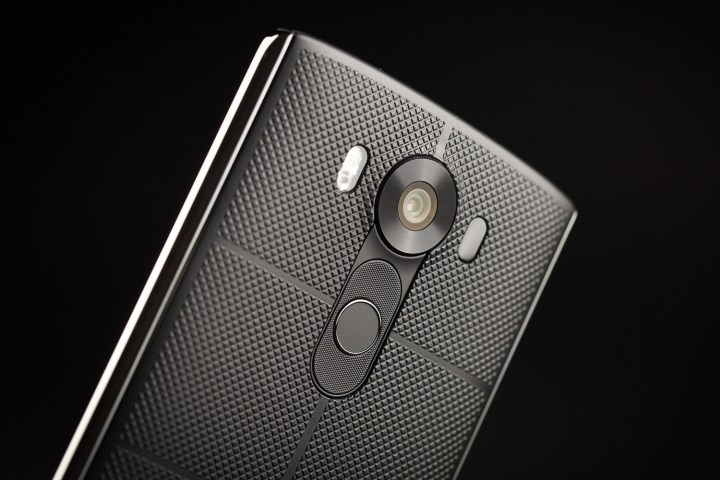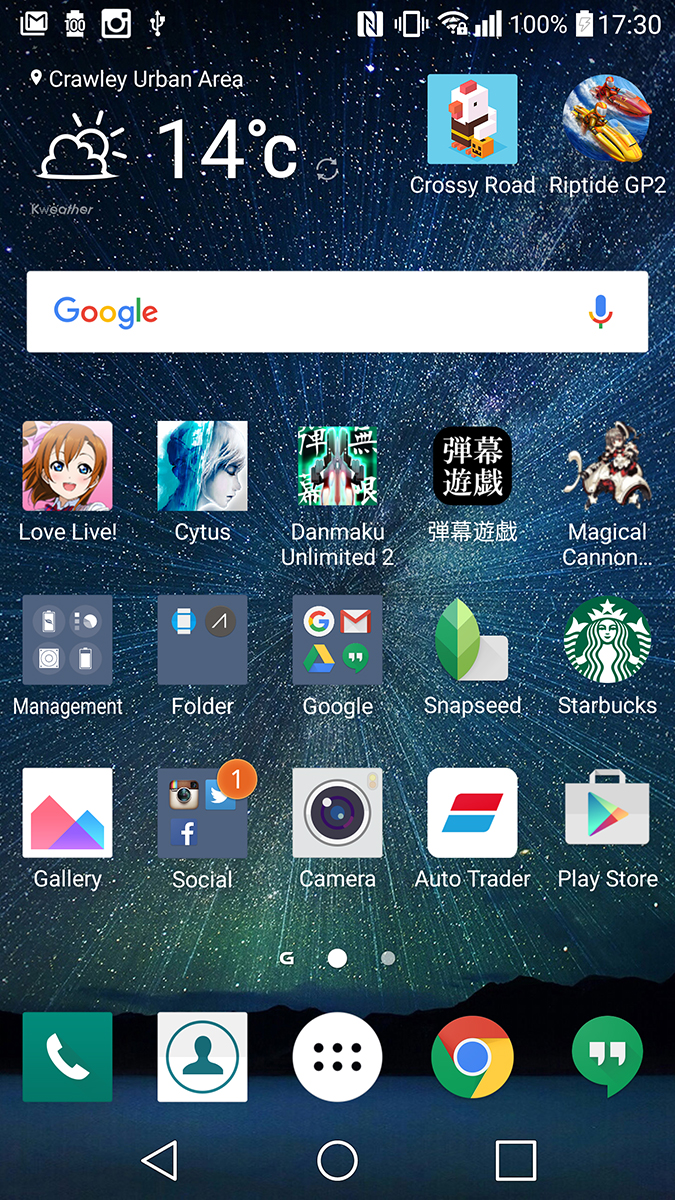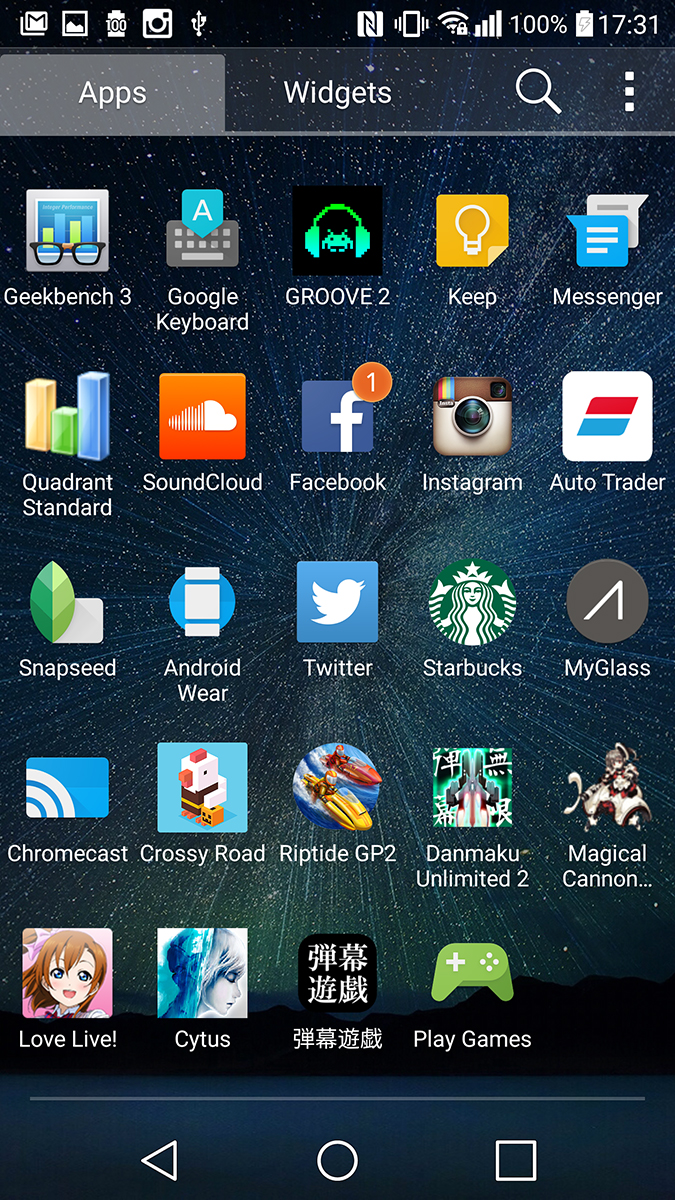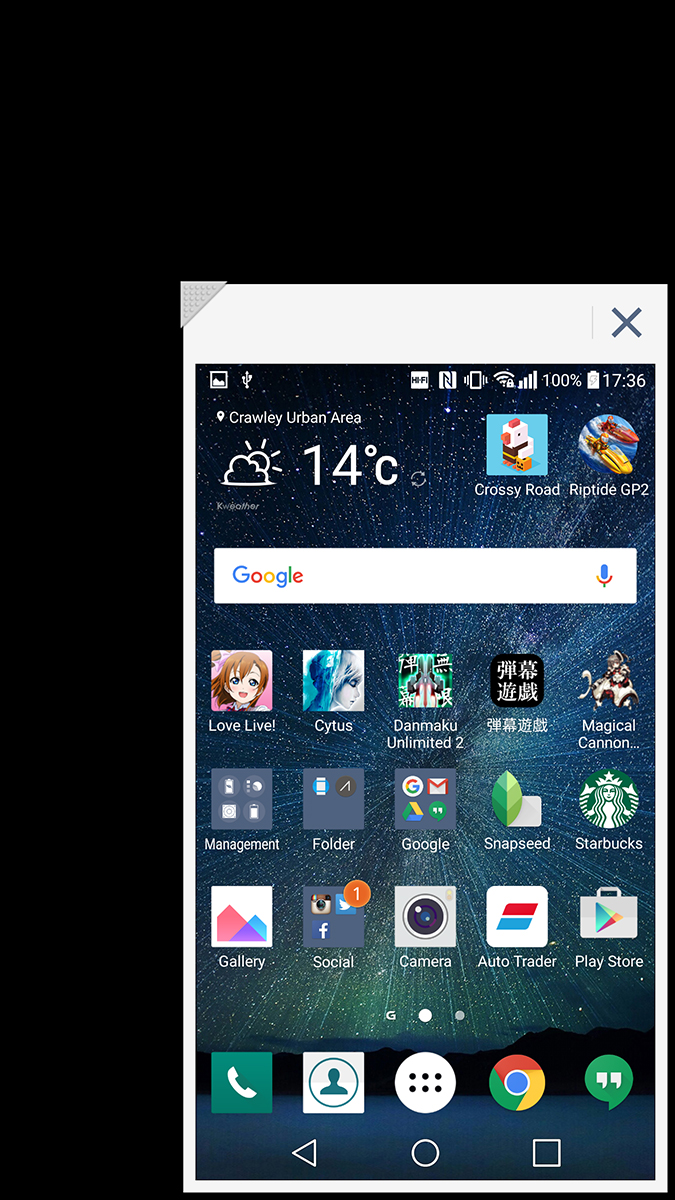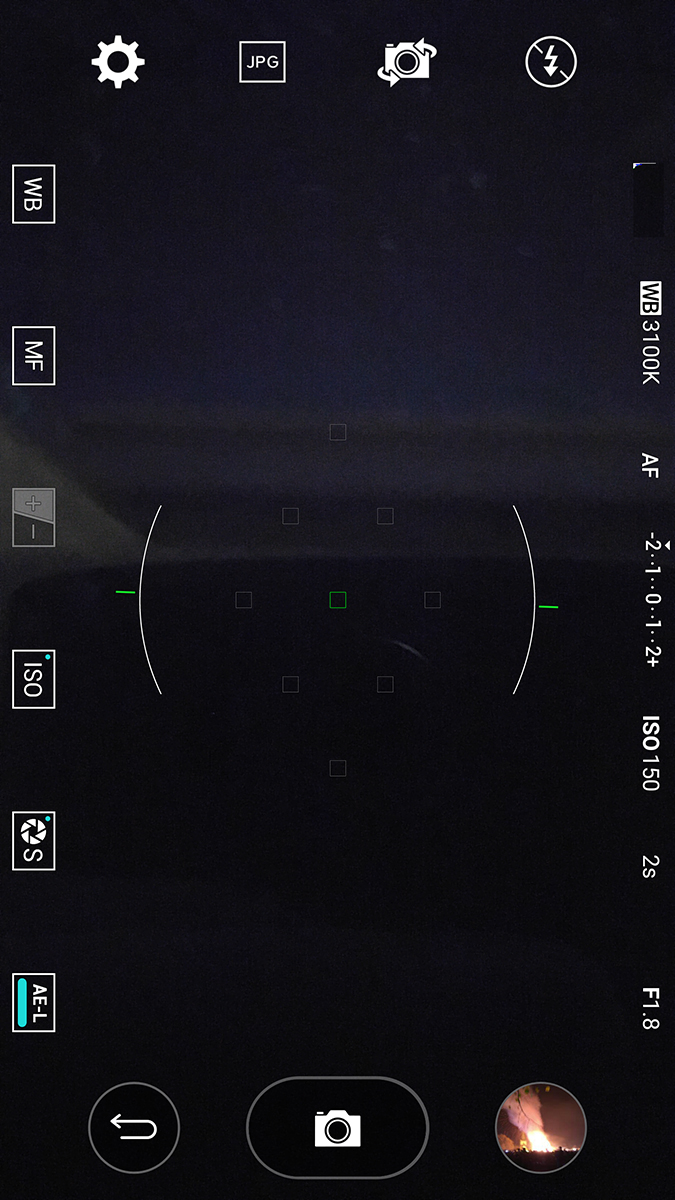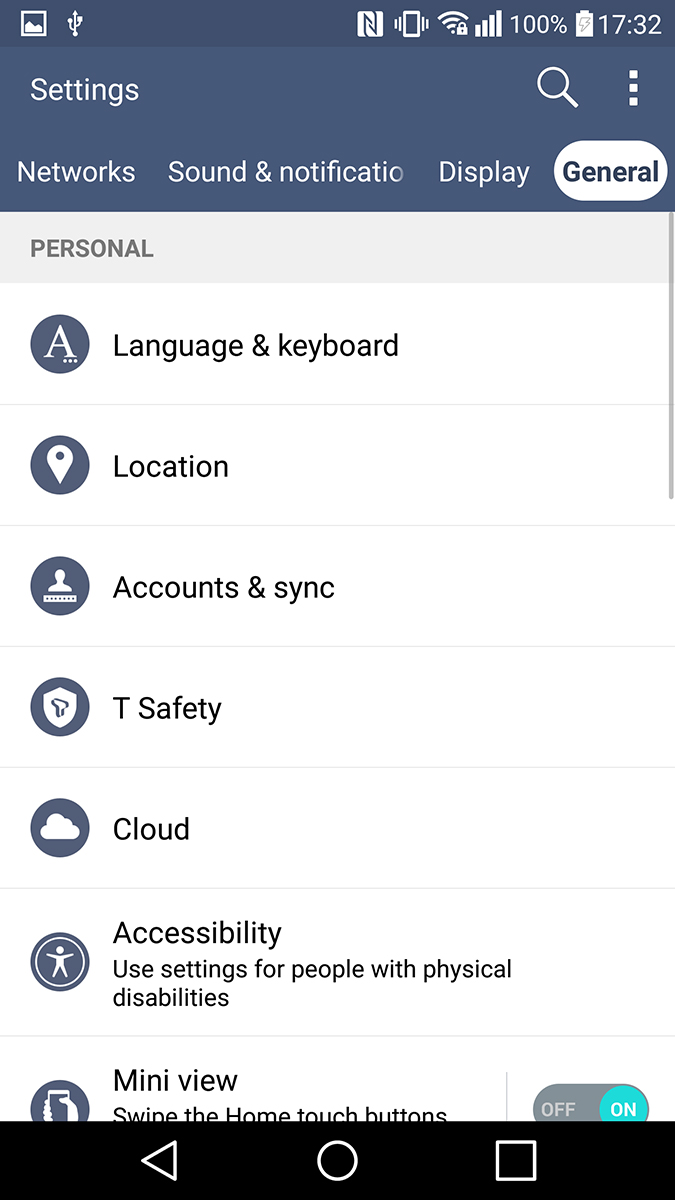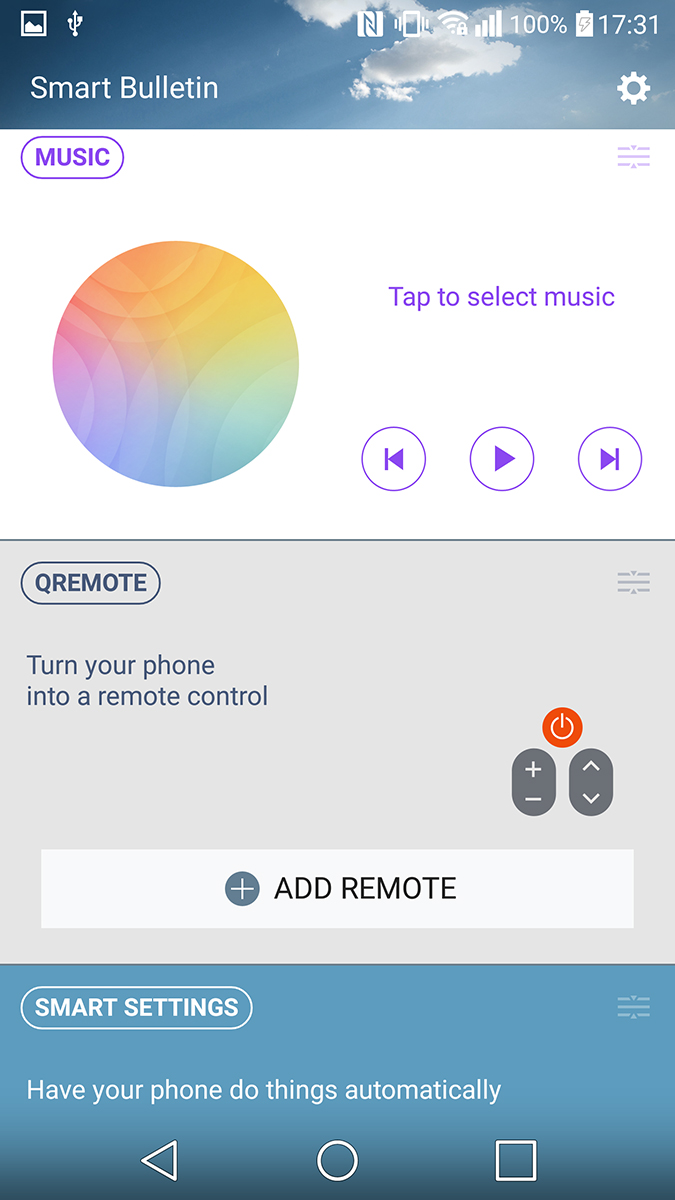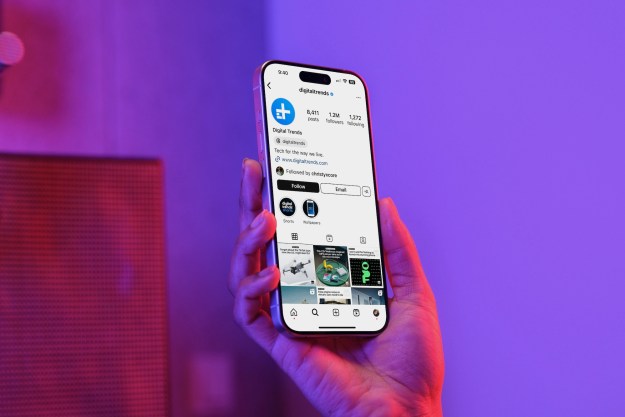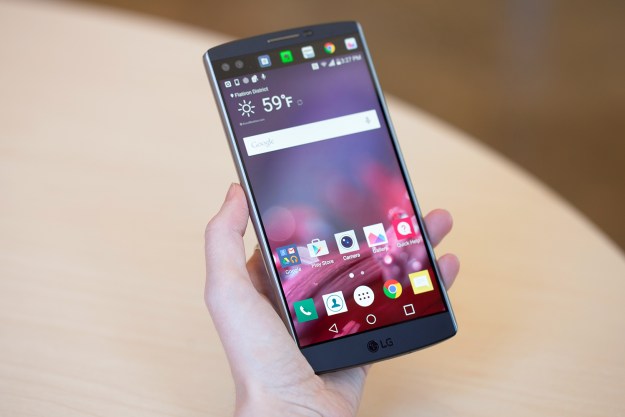
- The best smartphone camera we’ve used
- Durable metal body
- Gorgeous Quad HD screen
- Manual camera and video mode
- Fast fingerprint sensor
- Fast performance
- Second screen fails to hold attention
- It’s big and heavy
The first Galaxy Note Edge used an entirely extra, separate screen to create its curved side effect, and though Samsung has graduated to using an actual curved screen for its cool S6 Edge phones, LG has decided to also use a second screen to make its own massive, new phablet a little different.
On the V10, LG has placed a second screen above the main screen, alongside a pair of selfie cams. That’s right, the V10 has two screens and two cameras on the front.
It’s also an absolute monster. It has a huge screen, plenty of RAM, a giant battery, and a body that can withstand a drop. It’s a different beast than the G4, LG’s last major smartphone release, but it does share one trait with its svelte sister phone: a kickass camera. So, should you pick the LG V10 over the many other phablets to choose from? Here’s what it’s like.
Bigger and uglier than the LG G4, but comfortable
The V10 is a rugged phone, built to take some punishment. The frame is made from 316L stainless steel, and it extends out the side to give the phone a cool-to-the-touch body. The standard LG plastic cover used on the back of phones like the G4 is missing, and there’s no leather option either. Instead, the panel and screen are surrounded by something called Dura Skin. It feels like silicone, but is apparently twice as hard as plastic, and 10 times stronger than aluminum.
The result is pleasing to the touch. LG has given it a strong texture that’s very grippy, but the material doesn’t get caught on pocket linings, or inside a bag. I used a fabric pouch to protect the phone on several occasions, and it slipped in and out easily, something that a phone inside a silicone or rubber case would never do.
If the 5.5-inch screen on the G4 felt surprisingly compact, that illusion is shattered with the V10. The 5.7-inch display is huge, and using it with one handed is almost impossible, despite the slim bezels and extra grip provided by the Dura Skin. Using it back to back with the Galaxy S6 Edge Plus — the V10’s natural competitor — the Samsung phone was slightly easier to navigate with a single hand. However, the sharp Edge screen makes it less comfortable to hold than the V10.
Put the V10 in one pocket, and the S6 Edge Plus in the other, and you certainly notice the LG phone’s extra 40 grams in weight. It really is a beast. However, it doesn’t feel ungainly, or aged like an old Nokia brick. It feels reassuringly solid — made to last and take a few knocks. LG says it’s far more effective at surviving a corner drop than other devices, and if I dropped a phone, I’d want it to be the V10 rather the S6 Edge Plus, because I trust it would actually survive.
The 5.7-inch main screen is Quad HD, and it’s stunning.
The look is functional, but not really for me. It’s not very subtle, from the huge bezel surrounding the camera lens, to the gold-colored steel frame on our test phone. The G4 has a daintiness to its style, from the rear speaker grill to the minimalist front panel. I adore the look of the G4, and am impartial to the V10. Others I showed it to didn’t always agree, and were taken with the thickness, structure, and color scheme. Best advice? Hold the phone. In these days of delicate glass and aluminum devices, the V10’s very different, and many of you will probably really like it.
It has two screens
The LG V10 has two screens, one of which is an enormous, high-resolution beauty we can’t stop staring at, and the other isn’t. The 5.7-inch main panel is a larger version of the G4’s Quad HD display, and it’s stunning. Bring the brightness down to about 50-percent, choose a dark wallpaper with splashes of color, and revel in its gorgeousness. Play some video, and it’s even better, with strong contrast, incredibly bright colors, and lively tones. It may not be incredibly lifelike, but it just looks so good, you won’t care if it’s perhaps less natural than other screens.
The 2.1-inch second screen is an always-on mini display that I wanted to use more than I did. LG’s keen on giving us ways to access often-needed information quickly. On the G Flex 2 and G4, a slight swipe down on a sleeping screen would show the time, date, and any notifications. It was handy, but not something I used very often. The V10’s second screen is basically this, only without the downward swipe to activate.
Notification icons are shown alongside the clock, battery indicator, and the date when the screen is sleeping. Things get more interesting when you swipe it, revealing quick access buttons for the camera, Wi-Fi, and the flashlight. With the phone unlocked, its function changes. LG promotes it as a multitasking bar, where you can quickly access apps, contacts, music controls, and calendar entries. Additionally, it’ll show all those notifications that are usually hidden away, like when an app is downloading and installing, or incoming messages and emails.
It was this latter feature that made most sense. Notifications sliding in over apps, games, or video is annoying, but sometimes necessary. On the V10, they don’t disturb the main screen, and appear on the second screen instead. It’s logical, and made a difference when I used the phone. For the other functions, I’ve become so used to using Android’s app switcher, or swiping down the notification panel, that I usually forgot I could do some of the tasks using the second screen. It made it feel redundant. Others loved it though, and (maybe oddly) were usually impressed with how easily the flashlight can be activated from the lock screen.
The best smartphone camera
The second screen isn’t a pointless gimmick, but it’s close, and no reason to actually choose the V10 over any other big phone. However, the camera absolutely is. The V10’s camera is absolutely, hands-down, the best we’ve used on a smartphone. The photos it takes are glorious, its usability second-to-none, and its versatility makes the V10 the perfect companion regardless of when or where you want to take a cracking picture.
It’s really simple. If you want to take awesome pictures, and shoot brilliant video, then buy the V10.
Like the G4, it’s the manual mode that makes it so fantastic. It’s so simple to use that you don’t need to be a camera expert to figure it out, yet the results make you look like one. Manual modes offered by Huawei and OnePlus don’t even come close to providing the same degree of usability. The V10’s camera urges you to take control, and then makes it easy to tweak the picture for the best results. Low light is where the V10 excels. It takes better pictures at night than the already strong iPhone 6 Plus, and even outperforms the LG G4, sometimes.
For the V10, the manual control over still images has also been added to the video mode, plus the ability to adjust the frame rate, resolution, and even the audio recording levels. The experience is similar, but like shooting action photography, speed is of the essence, and you’ve got to be familiar with the controls to capture the moment at its best. Videos can be edited on the device easily, and LG’s own software is comprehensive. The electronic image stabilization added to the video mode is also great, smoothing out footage shot while walking along the street. We didn’t find it as satisfying using the V10 to take video, and prefer stills, but if you’re a video fan, then it’s hard to beat for quality.
We mentioned earlier there are two cameras above the screen. One is for taking single selfies, and the other has a wide-angle lens for taking group shots, and a button swaps between the two. We really wonder if it’s necessary to have two cameras above the screen (just like whether it’s really necessary to have two screens), but the wide-angle lens is very effective. It helps capture a more natural scene when taking selfies with more than one person in the frame, something made easier using LG’s Gesture Shot, and where clenching a fist in front of the camera activates a three-second timer. It also ends the need to carry a selfie stick.
It’s really simple. If you want to take awesome pictures, and shoot brilliant video, then buy the V10.
LG’s first fingerprint sensor
The V10 is the first non-Nexus LG phone with a fingerprint sensor, and it’s mounted in the sleep/wake key on the rear panel, just below the camera lens. Initially flakey, a software update improved its response and accuracy a great deal. It works slightly differently to other scanners. From a locked screen, you press the button, and then it reads your fingerprint, unlocking the screen. Once the update was applied, this worked faultlessly, and the scanner’s placement is not only sensible, but it’s comfortable. More so than the S6 Edge Plus’s Home button scanner.
Android 5.1.1 is installed, and is covered with LG’s own user interface. It’s a distance away from being the original stock version of Android Google puts out, and while the Settings menu is often annoyingly different than standard
LG has used the hexa-core Snapdragon 808 with a whopping 4GB of RAM for the V10, and it’s a rocket ship. Flicking through the OS for regular tasks, messaging, and gaming doesn’t worry the phone at all. It handles streaming video and music without fault, and is unfazed by games including Riptide 2 at full resolution. Putting it through some benchmarking tests saw a it score 5000 in Quadrant, a 3626 Multi-Core in Quadrant 3, and an impressive 521 in 3DMark’s Slingshot ES 3.1 test.
Battery Life
A massive, high-res screen and a powerful processor put the battery inside the V10 under considerable strain. It’s a 3,000mAh cell, the same as the G4, but it struggled to make it through a regular workday. Using the camera burned through it too, especially shooting video. The same update that helped the fingerprint sensor improved it a little, so some software optimization could help in the future. Until then, expect a daily recharge for the V10. That said, LG needs to be congratulated for making the battery removable, and for including a MicroSD card slot.
LG officials have told us that properly configured U.S. and European V10 models will get a standard 1.5 day battery life.
Conclusion
The DT Accessory Pack
Up your game and the get the most out of your gear with the following extras, hand-picked by our editors:
LinearFlex portable charger ($35)
Spigen Resiliant Rugged Armor case ($13)
Gorillapod flexible tripod ($20)
Phones with a screen size at or above 5.5-inches are shockingly common — almost all manufacturers, from Apple to ZTE, are producing at least one. The V10 offers a unique second screen and an extra durable body that can stand a drop, but neither of those are the reasons you should lay down money for LG’s whopper of a phone. The reason is the camera. If you want to take the very best smartphone pictures possible, almost regardless of the conditions and your talent, the V10 is the device for you.
Whether you choose it over other phablets will come down to your thoughts on design. The V10’s manual stills and video camera does make it a fantastic choice if you’re happy with the uglier look. However, we’re struggling to find a reason we’d buy this over the G4. If there’s a good deal on a G4, don’t look back. The V10 is sturdy and has a fingerprint sensor, but the second screen didn’t embed itself into our lives very effectively.
Overall, the LG V10 is an absolutely wonderful purchase.
Highs
- The best smartphone camera we’ve used
- Durable metal body
- Gorgeous Quad HD screen
- Manual camera and video mode
- Fast fingerprint sensor
- Fast performance
Lows
- Second screen fails to hold attention
- It’s big and heavy
Editors' Recommendations
- The best smartphones for video recording
- Epic 5-hour iPhone 11 Pro battery test video is the calm we need right now
- The dual-screen LG G8X ThinQ launches on November 1 for just $700
- LG’s V50 ThinQ is a different take on the folding phone, and it supports 5G
- The modern-looking Axon 10 Pro 5G is ZTE’s first 5G-ready smartphone

